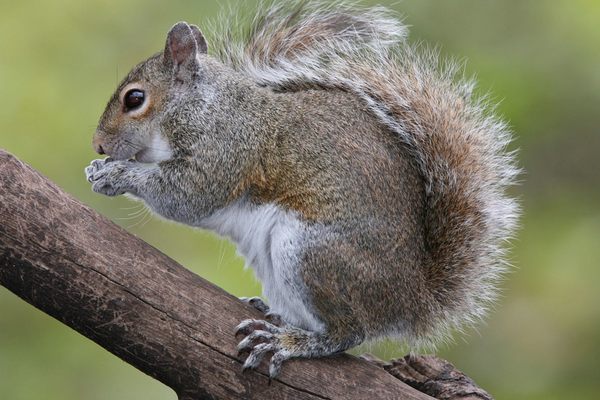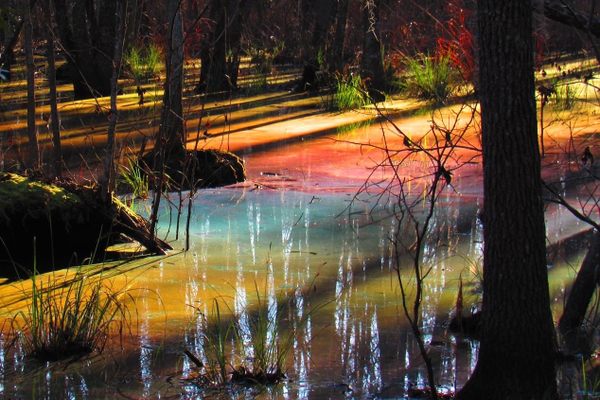In the Future, We May Paint With Brightly Colored Bacteria
Researchers have cracked the genetic code behind nature’s structural colors, allowing them to be replicated fast.

From peacocks to blue poison dart frogs, flora and fauna come in all colors of the rainbow. There’s so much color diversity, it can take scientists weeks to replicate a natural color—especially red—using electron beam lithography, a nanotechnology that moves an electron beam to “write” a color on a surface. Turns out, according to a new study, these natural colors have a replicable genetic code.
The study, conducted by biotech company Hoekmine BV and the University of Cambridge, examined how genetic alteration affected flavobacterium IR1, which reflects light at different wavelengths to create its own metallic green color. Flavobacterium IR1 is distinctive because it doesn’t require pigments such as chlorophyll or melanin to produce its shiny hue. Rather, the colony-based organism has “structural color,” meaning it relies on its internal organizational nanostructure to emit colors.
This structure made the flavobacterium the perfect specimen for the study, the results of which were published in Proceedings of the National Academy of Sciences. Each bacterium “is a rod shape around half a micrometer* in diameter,” says lead author Villads Egede Johansen. “The colony pack in an orderly fashion like a pile of tubes or cylinders.” The researchers genetically mutated the sizes and dimensions of the colony to see if the flavobacterium changed its green color. Not only did the engineering work, the researchers also captured the whole spectrum of the color scale from blue to red. Though it is difficult for the organism to capture non-spectral colors like white, pink, and brown, the bacterium can change spectral colors according to different angles.

“We mapped several genes with previously unknown functions and we correlated them to the colonies’ self-organisational capacity and their colouration,” said Colin Ingham, CEO of Hoekmine BV, in a press statement.
Now that researchers understand the genetic code behind natural colors, they can create the bacterial equivalent of the Photoshop color eye-dropper tool and grow the vivid colors that are present in peacock feathers within 24 hours.
The researchers have a broader end game for their breakthrough findings. As Silvia Vignolini from the Cambridge’s Department of Chemistry concluded in the press release, “the future is open for biodegradable paints on our cars and walls—simply by growing exactly the colour and appearance we want!”
*Correction: The story originally said each bacterium is about half a millimeter. They’re even smaller.















Follow us on Twitter to get the latest on the world's hidden wonders.
Like us on Facebook to get the latest on the world's hidden wonders.
Follow us on Twitter Like us on Facebook